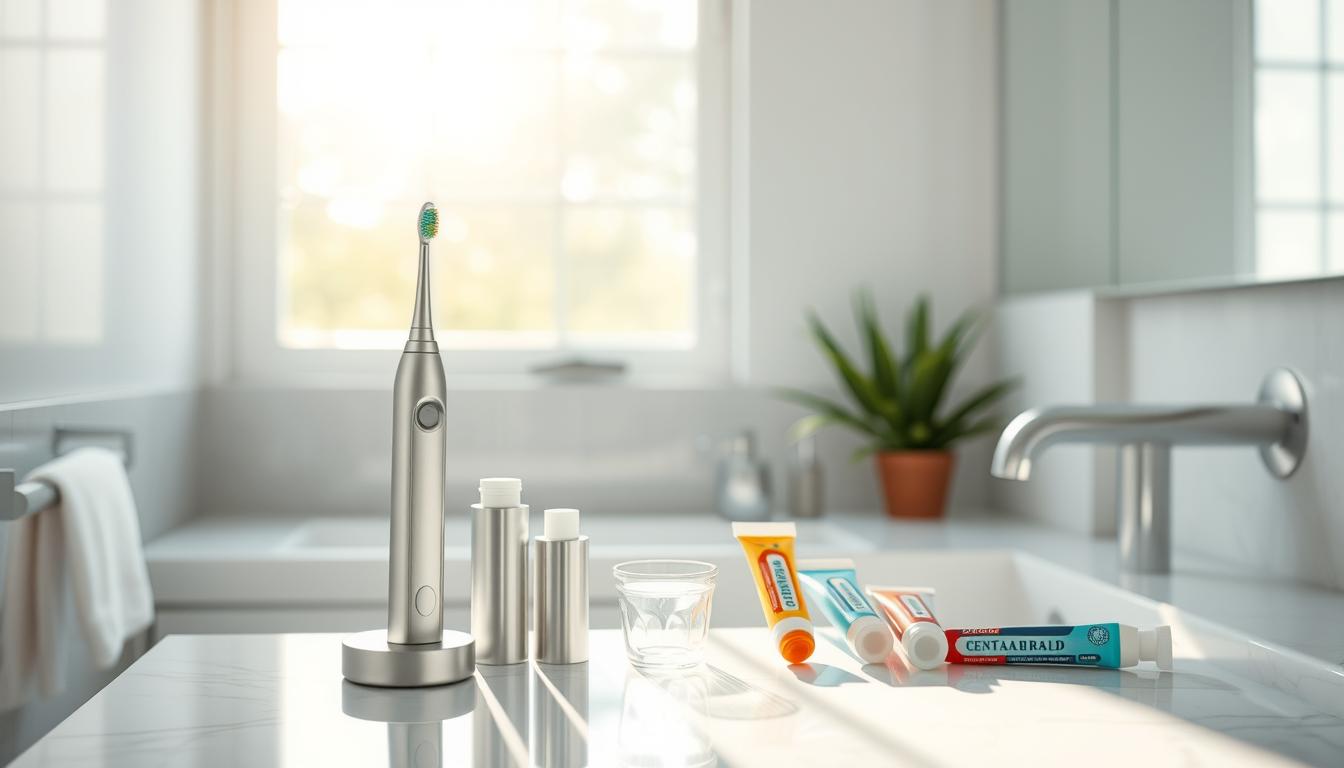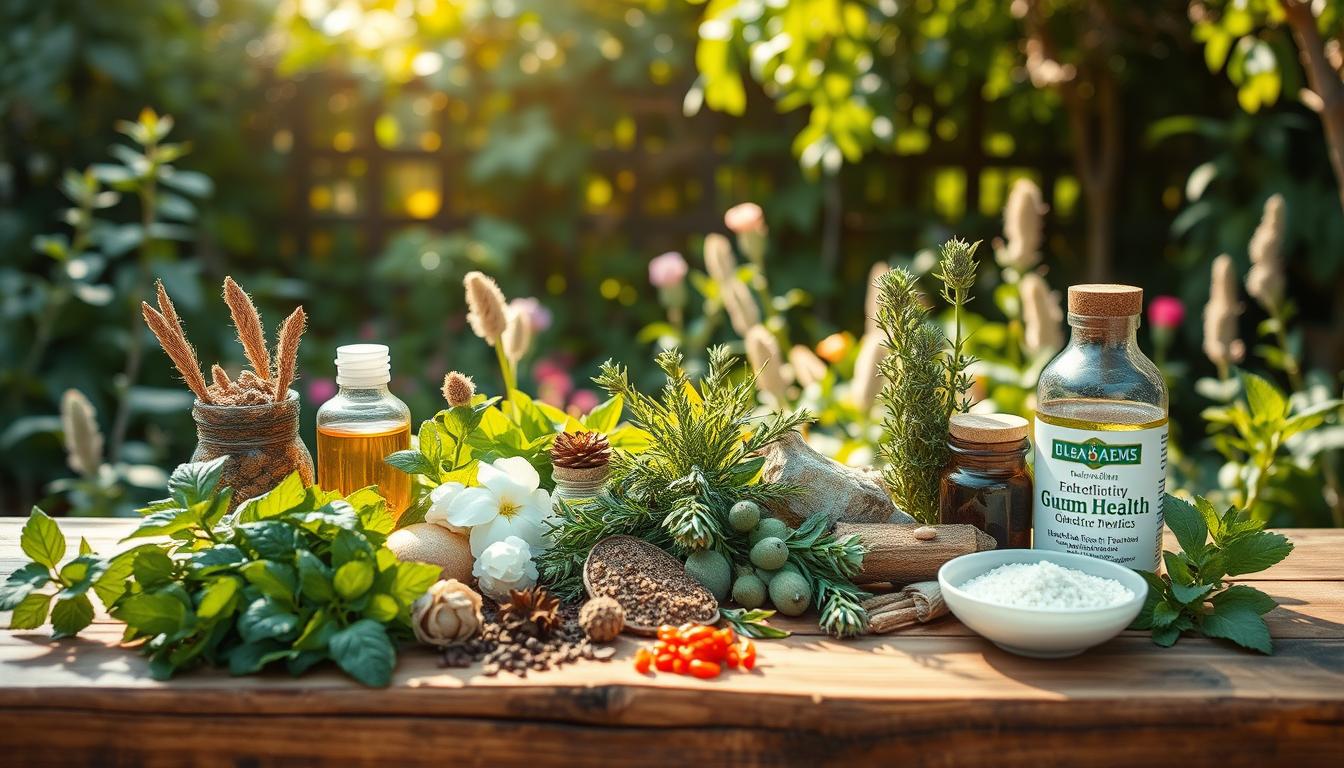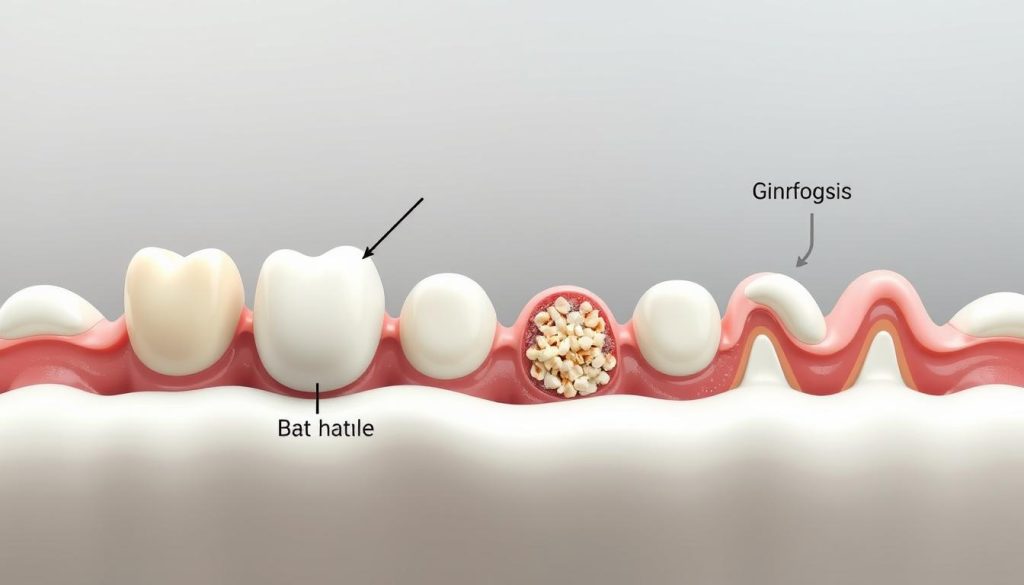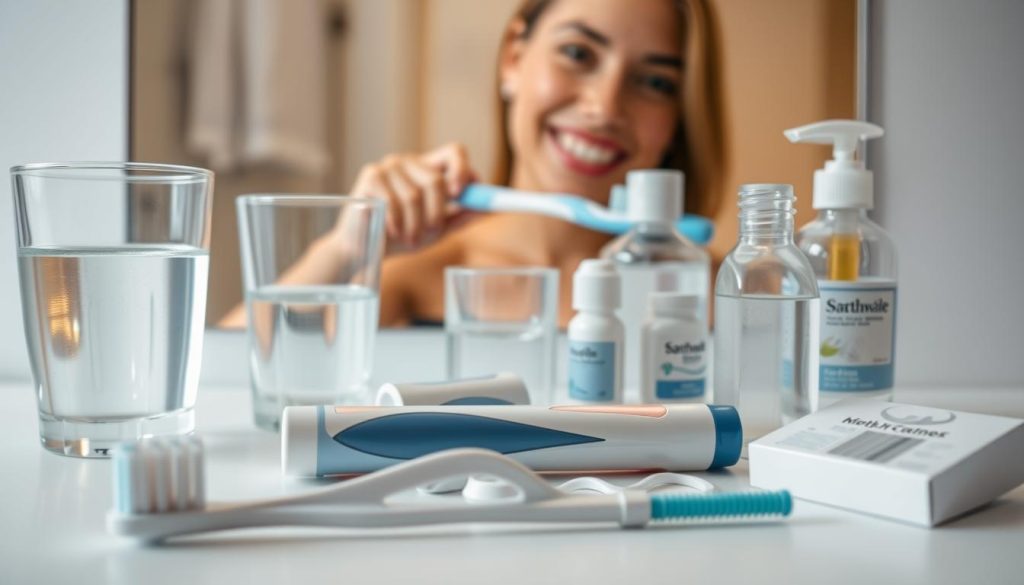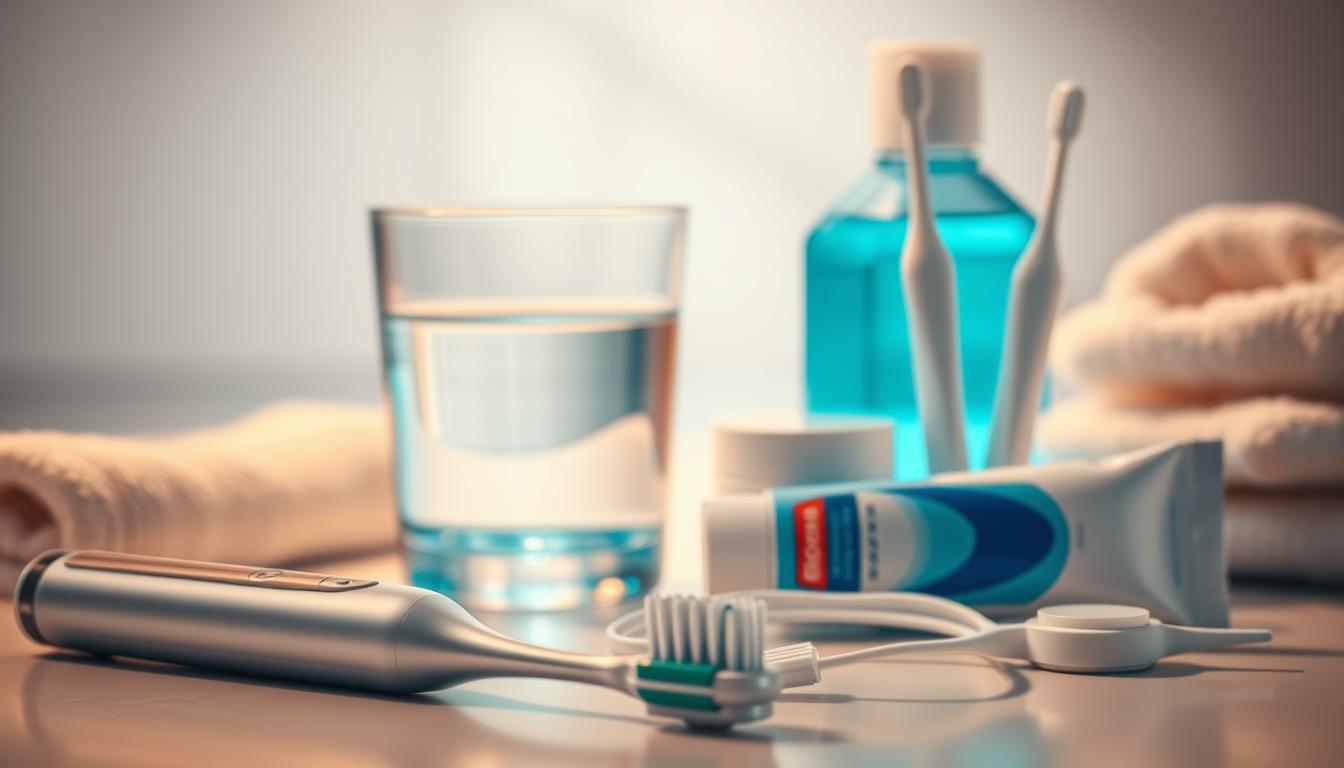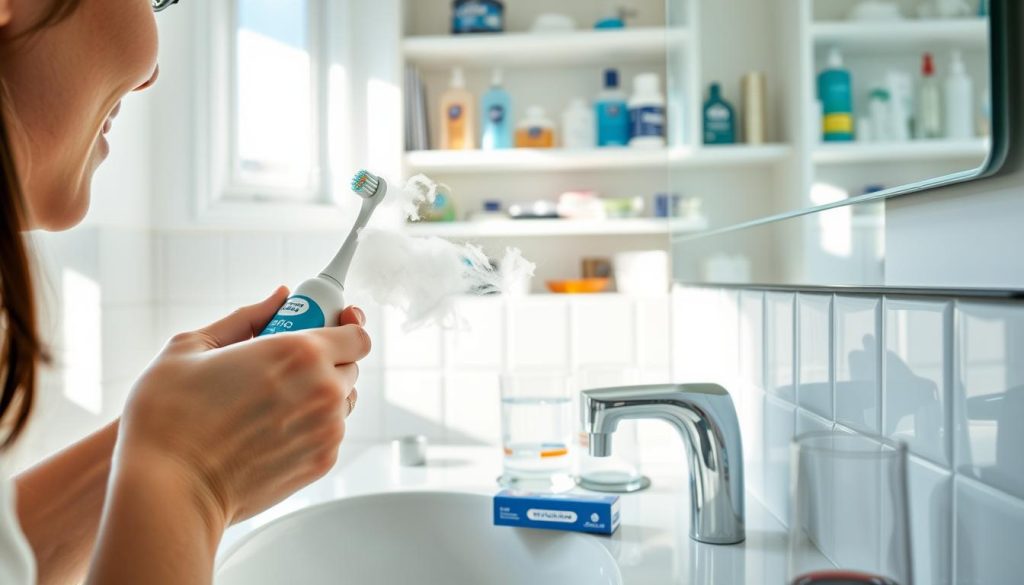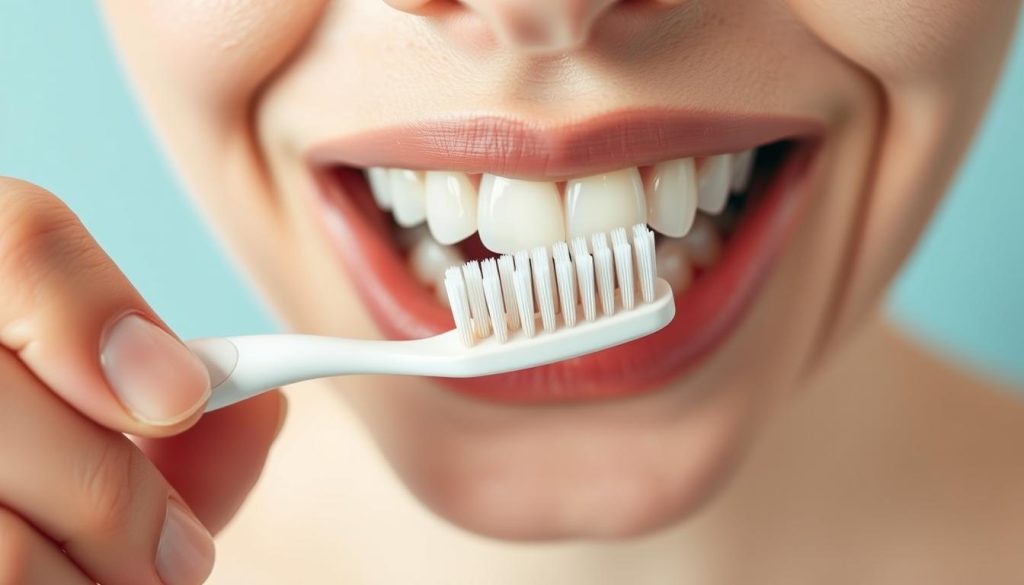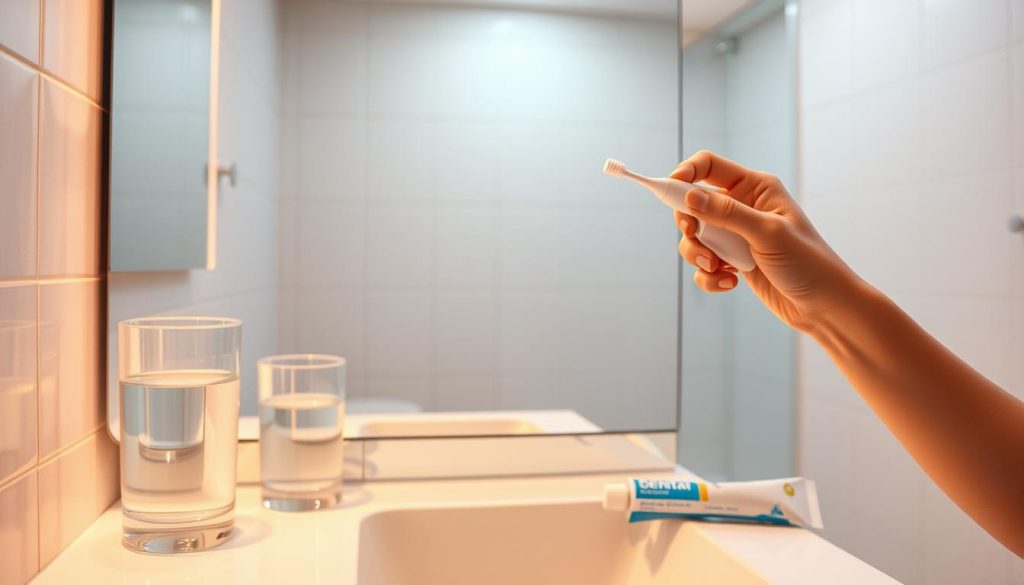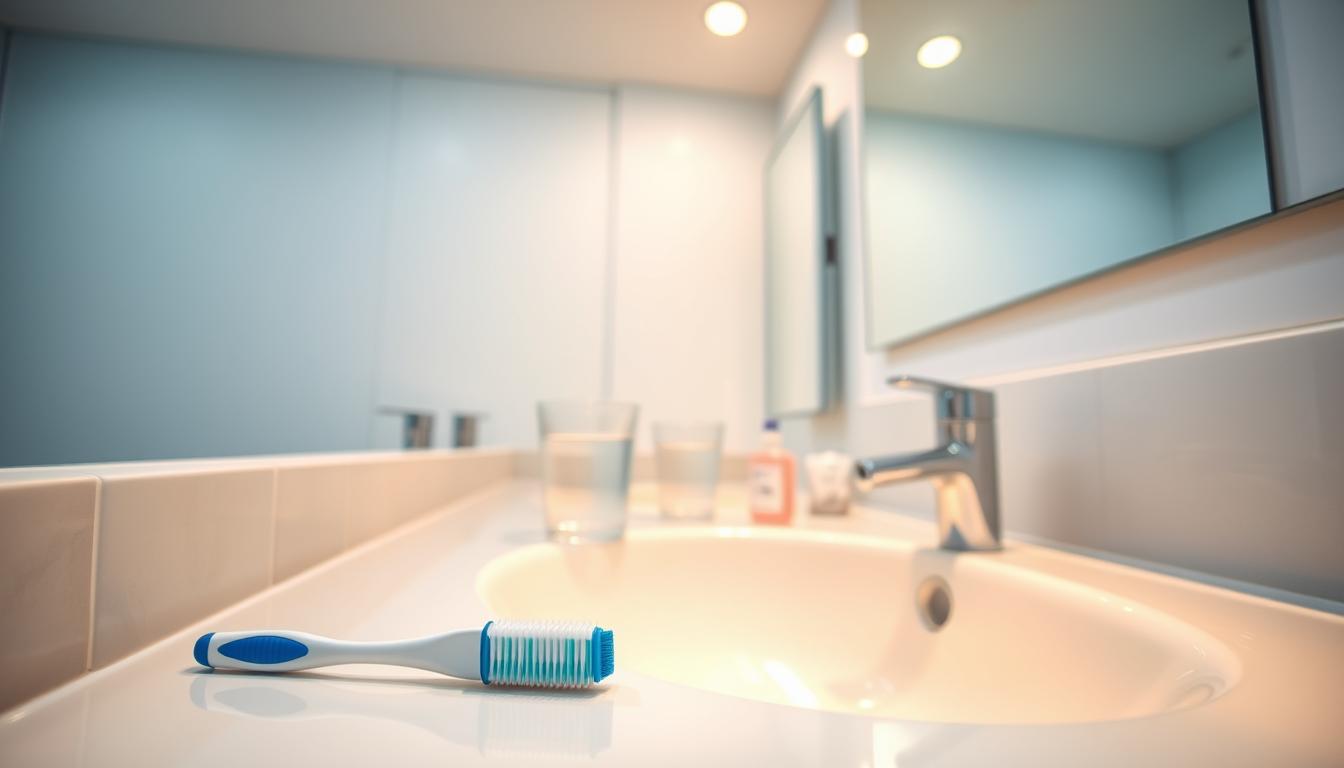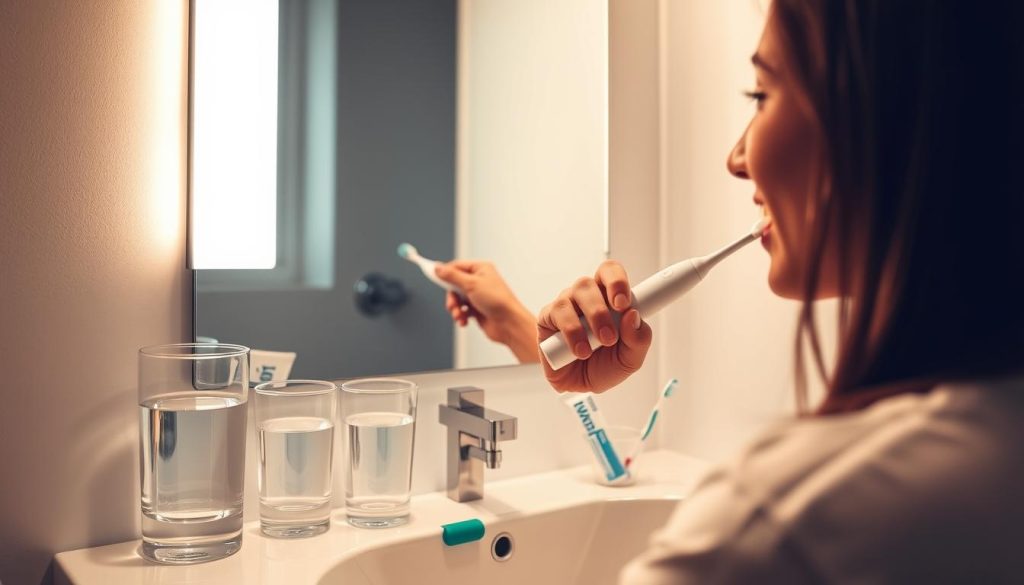Are you aware of the impact that your daily oral hygiene routine has on your overall health? The way you care for your teeth and gums can significantly affect not just your mouth, but your entire body.
Maintaining good oral health care is crucial for a healthy smile and overall well-being. Effective oral hygiene practices, including best oral care practices, can help prevent a range of issues, from cavities and gum disease to more serious health problems.
By understanding the importance of oral health care and implementing the right habits, you can keep your teeth and gums healthy for years to come.
Key Takeaways
- Good oral hygiene is linked to overall health and well-being.
- Effective brushing and flossing can prevent oral health issues.
- Best oral care practices can help maintain a healthy smile.
- Oral health care is crucial for preventing gum disease.
- A healthy oral hygiene routine can boost confidence.
The Foundation of Oral Health: Why It Matters
Oral health is more than just a healthy smile; it’s a vital part of our overall health. Maintaining good oral health habits is essential for preventing a range of dental issues and ensuring our overall well-being.
The Connection Between Oral and Overall Health
Research has shown that there is a significant link between oral health and overall health. Poor oral health has been linked to various systemic diseases, including heart disease and diabetes. By maintaining good oral health, we can reduce the risk of these conditions.
As Dr. Robert J. Genco, a renowned researcher in the field of oral health, once said, “The mouth is a window into the body’s overall health.”
“The mouth is a window into the body’s overall health.”
Preventing Dental Problems Before They Start
Preventing dental problems is a key aspect of maintaining good oral health. This can be achieved through a combination of good dental hygiene tips, such as regular brushing and flossing, and regular dental check-ups.
- Brush your teeth at least twice a day with fluoride toothpaste.
- Floss daily to remove plaque and food particles.
- Visit your dentist regularly for check-ups and cleanings.
Setting Realistic Oral Hygiene Goals
Setting achievable effective dental care routine goals is crucial for maintaining good oral health. Start by identifying simple changes you can make to your daily routine, such as brushing your teeth for the full recommended 2 minutes.
By setting realistic goals, you can develop healthy habits that will last a lifetime.
Proper Brushing and Flossing Techniques
Proper brushing and flossing techniques are the foundation of a healthy, beautiful smile. By mastering these simple yet effective practices, you can significantly reduce the risk of dental problems and maintain optimal oral health.
Choosing the Right Dental Tools
Selecting the appropriate dental tools is the first step towards effective oral hygiene. This includes choosing the right toothbrush and toothpaste.
Toothbrush Selection Guide
When it comes to toothbrushes, the options can be overwhelming. Consider a soft-bristled brush that fits comfortably in your mouth, allowing you to reach all areas easily. Replace your toothbrush every 3-4 months or sooner if the bristles become frayed.
Finding Your Ideal Toothpaste
Toothpaste comes in various formulations, each designed to address specific oral health needs. Look for a toothpaste that carries the American Dental Association (ADA) Seal of Acceptance, indicating it meets rigorous standards for safety and effectiveness.
The Bass Brushing Method: Step by Step
The Bass brushing method is a highly effective technique for removing plaque and maintaining healthy gums. Here’s how to do it:
- Place your toothbrush against your gums at a 45-degree angle.
- Gently move the brush back and forth in small circular motions.
- Ensure you cover all surfaces of your teeth, including the front, back, and top.
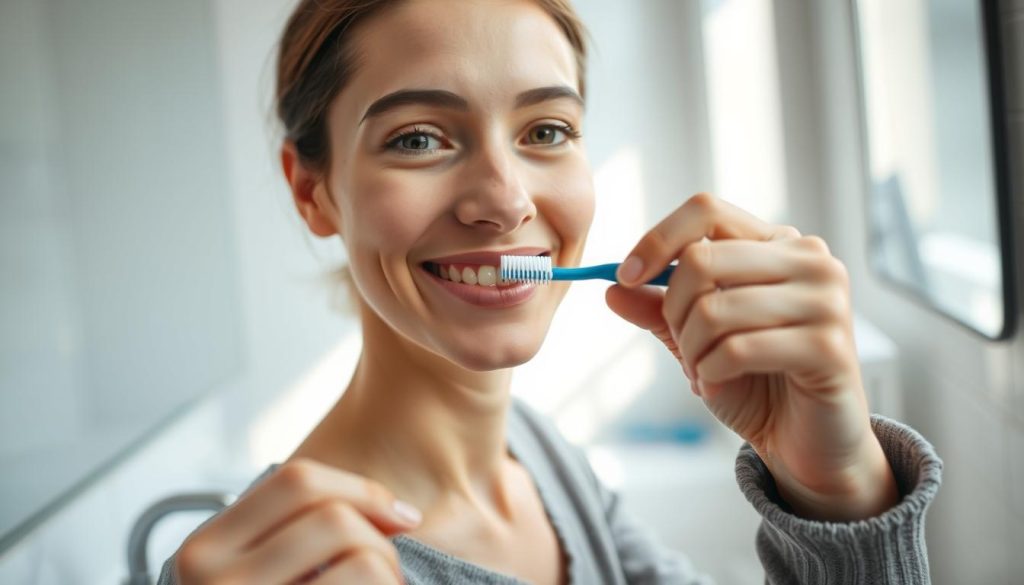
Brushing Frequency and Duration
Brushing your teeth at least twice a day is crucial, but it’s equally important to do it correctly. Brush for at least two minutes, paying special attention to areas where your teeth and gums meet.
| Brushing Frequency | Recommended Duration | Additional Tips |
|---|---|---|
| At least twice a day | 2 minutes | Brush gently, covering all tooth surfaces |
| After meals (optional) | 2 minutes | Consider using a fluoride mouthwash |
By following these guidelines and practicing proper brushing and flossing techniques, you’ll be well on your way to achieving a healthier, happier smile.
Mastering the Art of Flossing
Mastering the art of flossing can significantly enhance your oral health. Flossing is an essential oral hygiene practice that removes plaque and food particles from between your teeth and under your gumline, areas that your toothbrush can’t reach.
Types of Dental Floss and Their Benefits
There are various types of dental floss available, each with its own benefits. Waxed floss is coated with wax, making it easier to slide between tightly spaced teeth. Unwaxed floss is ideal for teeth that are not tightly spaced. Interdental floss is thicker and designed for use between teeth that are farther apart. Choosing the right type of floss depends on your individual dental needs.
The Correct Flossing Technique
To floss effectively, you need to use the correct technique. Start by wrapping the floss around your middle fingers, leaving about 1-2 inches in between. Gently slide the floss between your teeth, curving it around the edge of each tooth in a “C” shape. Move the floss up and down against the tooth, making sure to clean below the gumline.
How to Floss Hard-to-Reach Areas
For hard-to-reach areas, consider using a floss pick or an interdental brush. These tools can help you navigate tight spaces and ensure a thorough cleaning.
Flossing with Dental Work
If you have dental work such as braces, bridges, or implants, you may need to adjust your flossing technique. Superfloss or orthodontic floss can be used to navigate around these dental appliances. It’s also a good idea to consult your dentist for personalized advice.
How Often to Floss and Best Time of Day
It’s recommended to floss at least once a day, preferably before brushing your teeth at night. This helps remove any food particles and plaque that may have accumulated throughout the day, ensuring your teeth and gums remain healthy.
By incorporating these flossing techniques into your daily oral hygiene routine, you can significantly improve your oral health and maintain a healthy, beautiful smile.
Advanced Oral Care Tools and Products
Beyond basic brushing and flossing, there are numerous advanced oral care tools and products designed to optimize your oral health. These innovations can help address specific oral care needs, enhance cleaning efficiency, and promote overall dental well-being.
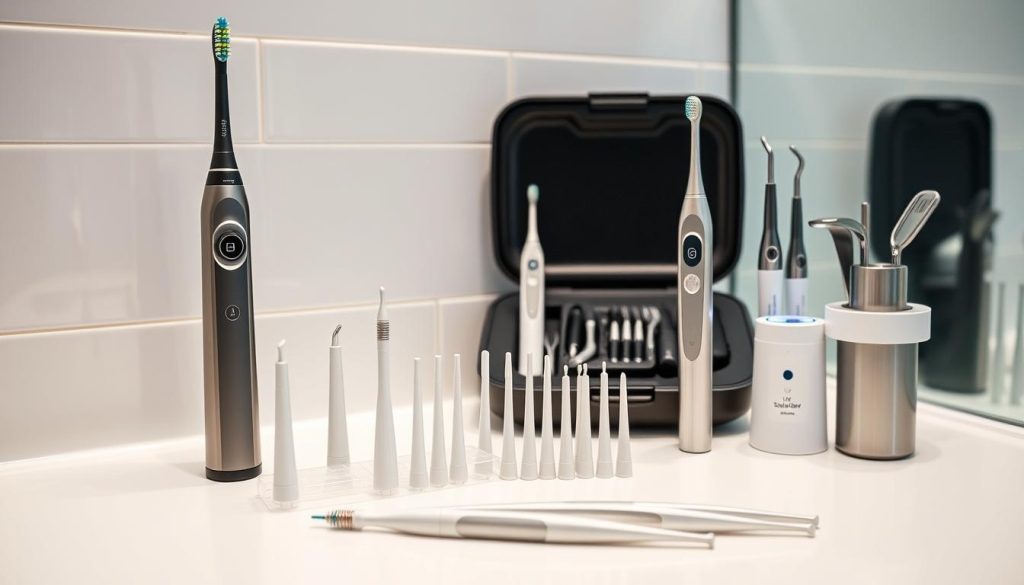
Mouthwash: Types and Proper Usage
Mouthwash can be a valuable addition to your oral care routine, offering benefits such as reducing plaque, gingivitis, and bad breath. There are various types, including antibacterial, fluoride, and cosmetic mouthwashes. Antibacterial mouthwashes contain ingredients that help reduce bacteria and inflammation, while fluoride mouthwashes can strengthen tooth enamel. To use mouthwash effectively, rinse your mouth for 30 seconds to 1 minute, and avoid eating or drinking for 30 minutes afterward.
Interdental Brushes and Picks
Interdental brushes and picks are designed for cleaning between teeth, where a regular toothbrush may not reach. Interdental brushes come in various sizes to fit different gaps between teeth and can be more effective than flossing for some individuals. Interdental picks are useful for navigating tight spaces and can be used with or without a handle. Using these tools can help remove plaque and food particles, reducing the risk of interdental cavities and gum disease.
Water Flossers: Benefits and Limitations
Water flossers, or oral irrigators, use a stream of water to clean between teeth and below the gumline. They can be particularly beneficial for individuals with tightly spaced teeth, orthodontic appliances, or sensitive gums. Benefits include improved gum health and reduced bleeding. However, they may not remove plaque as effectively as traditional flossing and can be more expensive.
Smart Toothbrushes and Dental Apps
Smart toothbrushes often come equipped with sensors and Bluetooth connectivity, allowing them to track brushing habits and provide feedback via a connected app. These toothbrushes can help ensure thorough cleaning, monitor brushing technique, and offer personalized recommendations. Dental apps can also be used independently to track oral hygiene habits, provide reminders, and offer educational content. Together, they can enhance your oral care routine and promote better habits.
Avoiding Common Oral Hygiene Mistakes
Despite the importance of oral hygiene, many common mistakes can be avoided with the right knowledge and practices. Understanding these mistakes is the first step towards maintaining a healthy, beautiful smile.
Brushing Too Hard or Too Soft
Brushing your teeth is a crucial part of oral hygiene, but doing it too hard or too soft can be counterproductive. Brushing too hard can damage your gums and tooth enamel, while brushing too soft may not effectively remove plaque and food particles.
Tip: Use a gentle circular motion with a soft-bristled toothbrush to clean your teeth effectively without causing damage.
Flossing Errors That Damage Gums
Flossing is another critical aspect of oral hygiene, but it can be done incorrectly. Common mistakes include snapping the floss into the gums, which can cause damage and pain.
Correct Technique: Gently slide the floss between your teeth, curving it around the edge of each tooth in a “C” shape to remove plaque and debris.
Neglected Areas in Your Oral Care Routine
Many people neglect certain areas in their oral care routine, such as the back sides of molars and the gum line. These areas are prone to plaque buildup and require regular attention.
Special Considerations for Different Age Groups
Oral hygiene needs can vary significantly across different age groups. For example, children may require fluoride toothpaste and gentle brushing, while older adults may need to focus on gum care and denture hygiene.
| Age Group | Oral Hygiene Tips |
|---|---|
| Children | Use fluoride toothpaste, gentle brushing |
| Adults | Regular brushing and flossing, mouthwash |
| Older Adults | Focus on gum care, denture hygiene |
Conclusion: Your Path to a Healthier Smile
Maintaining a healthy smile requires consistent effort and dedication to best oral care practices. By incorporating proper brushing and flossing techniques into your daily routine, you can significantly reduce the risk of dental problems and promote overall well-being.
Effective oral hygiene practices go beyond just brushing and flossing. They involve a comprehensive approach that includes using the right dental tools, avoiding common oral hygiene mistakes, and leveraging advanced oral care products. By mastering these skills, you can enjoy a healthier, more confident smile.
As you’ve learned from this article, proper brushing and flossing techniques are foundational to good oral health. By applying these techniques and other oral hygiene practices discussed, you can take a significant step towards achieving a healthier smile. Stay committed to your oral care routine, and you’ll be rewarded with a lifetime of healthy, happy smiles.
FAQ
How often should I brush my teeth?
You should brush your teeth at least twice a day, in the morning and before bed, using a fluoride toothpaste and a soft-bristled toothbrush. Brushing for the full recommended 2 minutes can help remove plaque and prevent oral health issues.
What is the best way to floss?
To floss effectively, wrap the floss around your middle fingers, leaving about an inch of floss in between. Gently slide the floss between your teeth, curving it around the edge of each tooth in a “C” shape, and move it up and down to remove plaque and debris. Be sure to floss all surfaces of your teeth, including the back sides of your molars.
What type of toothbrush is best for my teeth?
The American Dental Association recommends using a soft-bristled toothbrush that fits comfortably in your mouth. You can choose between a manual or electric toothbrush, as both can be effective for cleaning teeth. Look for a toothbrush with the ADA Seal of Acceptance, which indicates that it has met certain standards for safety and effectiveness.
How often should I replace my toothbrush?
You should replace your toothbrush every 3-4 months, or sooner if the bristles become frayed or worn. This will help ensure that your toothbrush remains effective at removing plaque and bacteria from your teeth.
Can I use mouthwash as a substitute for brushing and flossing?
No, mouthwash should not be used as a substitute for brushing and flossing. While mouthwash can help kill bacteria and freshen breath, it cannot remove plaque and food particles from your teeth like brushing and flossing can. Use mouthwash as an additional tool in your oral hygiene routine, but not as a replacement for regular brushing and flossing.
How can I prevent plaque buildup on my teeth?
To prevent plaque buildup, brush your teeth at least twice a day with a fluoride toothpaste, and floss once a day to remove food particles and plaque from between your teeth. Regular dental cleanings and check-ups can also help prevent plaque buildup and detect any oral health issues early on.
Are electric toothbrushes more effective than manual toothbrushes?
Electric toothbrushes can be more effective than manual toothbrushes for some people, particularly those with limited dexterity or who have trouble brushing for the full recommended 2 minutes. However, both electric and manual toothbrushes can be effective for cleaning teeth, as long as you use proper brushing technique and brush for the full recommended time.
How can I make flossing easier?
To make flossing easier, try using a floss pick or interdental floss, which can be more convenient and easier to maneuver than traditional floss. You can also try flossing at different times of day, such as before bed or after meals, to find a routine that works best for you.
